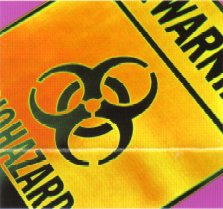

|
207 Abbey Lane Lansdale, Pennsylvania 19446 215-855-1800 |
5201 Ocean Avenue #2007 Wildwood, New Jersey 08260 215-990-6663 |
Specializing in Real Estate Appraisal and Property Tax Consulting
A Professional Courtesy of:
|

Specializing in Real Estate Appraisal and Property Tax Consulting |
| Summer 2007 |
 |
|
In This Issue: |
|
Contingent Valuation: The Debate Continues Users of appraisal reports know that there are three traditional approaches to value, specifically the cost, income capitalization and sales comparison approaches. These are universally accepted based on established convention, the real estate valuation body of knowledge and the rulings of various courts over many decades.Some members of the profession, principally academics, have sought additional suitable approaches with which to augment the appraisal process. One approach that has recently drawn considerable attention is termed "contingent valuation." Contingent valuation involves surveys of potential buyers or sellers. Questions within such a survey relate to the price that a potential buyer would be willing to pay or that a potential seller would he willing to accept. Contingent valuation has long been used for the valuation of "non-economic" goods or services (i.e., those that are not frequently bought or sold). The result is typically referred to as "use value" rather than market value. Contingent valuation is most often employed in the valuation of contaminated properties in which damages (or lack of same) are the issue. In the early 1990s, the National Oceanic and Atmospheric Administration formed a "blue ribbon" panel to study contingent valuation as a tool in the development of regulations regarding the assessment of damages resulting from oil spills. The panel formulated several criticisms of contingent valuation, including the assertion that it "is likely to overstate 'real' willingness to pay." The traditional approaches to value reflect "revealed preferences" in that they are based on the actions of market participants. Contingent valuation, on the other hand, reflects stated preferences, i.e., what a potential buyer or seller states he or she would pay (or accept) for a particular property. The topic has been actively debated among valuation professionals recently, particularly within the academic community. Adherents of contingent valuation assert that the reliability of the approach is heavily reliant on the content and objectivity of survey questions. Biased questions result in biased responses, and vice versa. Proponents state that contingent valuation is particularly useful in the estimation of value of rarely traded properties or in cases in which limited sales data are available. Further, they hold that contingent valuation can be an additional tool used in conjunction with the traditional approaches to value. Opponents argue that contingent valuation has several weaknesses: For all of these reasons, opponents argue that the results of contingent valuation are not reliable and thus not reflective of market value. Conversely, proponents maintain that contingent valuation is reliable, assuming carefully crafted survey questions. The debate over the merits of this approach will undoubtedly continue for the foreseeable future. The outcome is not yet predictable. |
The Valuation of Contaminated Property Real estate appraisers are often engaged to opine upon the value of property affected by contaminants of various sorts. Such opinions are then integrated into damage models in the context of litigation. Contaminates are divided into building contaminates and soil contaminates (further subdivided into soil and groundwater contamination). The former includes toxic mold, radon, asbestos and lead. The latter includes solvents, pesticides and hydrocarbons.
Contaminates are divided into building contaminates and soil contaminates (further subdivided into soil and groundwater contamination). The former includes toxic mold, radon, asbestos and lead. The latter includes solvents, pesticides and hydrocarbons.There are various solutions to contamination within improvements, including removal, encapsulation and implementation of an operations and management program. Solutions to soil contamination consist of various remedial techniques, divided into in situ and ex situ methods. The optimal solution depends, of course, on the specific property and the nature of the contamination. The starting point in the valuation of contaminated property is the value of the property if it were uncontaminated. The value as contaminated is based on the foregoing less the following (to the extent appropriate): 
Real estate valuation professionals must rely on environmental engineers or assessors to form opinions regarding the need for, and costs of, remediation. Use-related costs may arise to the extent that the use(s) for such a property is limited by the existence of contamination. Other use-related costs may include those arising from the inability to occupy a contaminated property until the completion of remediation. The greatest challenge in such assignments is in quantifying market resistance, or stigma, if any. Stigma clearly does not affect all contaminated property. Any estimate of stigma must be supported by market evidence. This is often difficult, given the dearth of sales of similar contaminated properties in the market area. Therefore, it is often necessary to expand the search for comparable contaminated properties to include data from outside the market area. Another means of quantifying stigma is by comparing capitalization rates of otherwise similar contaminated properties with those of contaminated properties. If a differential exists, capitalized net operating income under each premise forms the basis of opinions as to stigma. The appraiser sometimes chooses to form opinions of stigma based on survey data. The disadvantages of using such data are outlined in "Contingent Valuation: The Debate Continues" on page one. The professional real estate appraiser has the expertise necessary to formulate market-supported opinions of value of contaminated property. In order to obtain reliable results, the appraiser must have access to all relevant information regarding environmental conditions and the cost to remediate such conditions. |
The Appraiser's Role In Eminent Domain Appraisers of real estate are frequently involved in valuation assignments arising from the exercise of the power of eminent domain (condemnation) by governmental entities. Clients in such assignments include condemning authorities, property owners and their attorneys. The intended use of such appraisals is almost always for litigation support.When condemnation occurs, it is either of the entire property or a portion of it. Condemned property is termed the taking. The entire property prior to the taking is called the larger, parent or whole tract. That which is not taken is termed the remainder.  The determination of the larger tract is often of great importance in the valuation process because the value of the taking is typically based on the value of the larger tract, assuming that the former has no self-sustaining value as severed land. The bases upon which the determination of the parent tract are made are unity of ownership, unity of use and contiguity, with the latter generally of lesser importance.
The determination of the larger tract is often of great importance in the valuation process because the value of the taking is typically based on the value of the larger tract, assuming that the former has no self-sustaining value as severed land. The bases upon which the determination of the parent tract are made are unity of ownership, unity of use and contiguity, with the latter generally of lesser importance.Laws regarding eminent domain require that owners of condemned properties receive just compensation. In virtually all cases, market value is the basis for estimating just compensation. The calculation of total compensation varies by state. There are two basic rules that govern compensation, specifically the federal rule and the state rule. The federal rule is: straightforward, total compensation is the difference between the value of the larger tract prior to the taking and the value of the remainder after the taking. The federal rule thus offsets damages to the remainder by any benefits to the remainder after the taking. The weaknesses of the federal rule are: Twenty-six states have adopted the federal rule. The state rule for just compensation is based on the value of the taking plus damages to the remainder. Benefits to the remainder are generally not an offset to damages. It should be noted that several states provide for variations in such calculations. The primary weakness of the state rule is that damages can easily be overstated ("double counted"). Generally, loss of value attributable to circuitry of access is not compensable. For example, access to a particular property after the taking may become more difficult (i.e., circuitous) by virtue of a planned freeway without convenient ingress or egress to the property. In such an instance, owners would likely not receive compensation for any diminution in value. Similarly, financial losses attributable to business interruption are unlikely to be compensable.  It is also unlikely that owners would be compensated for nonrealty (intangible) components. The distinction to be made is whether a value component runs with the land or whether it is personal property. As an example, a license to sell alcoholic beverages that accrues to a specific person or entity, not the specific real property, would not likely be compensable.
It is also unlikely that owners would be compensated for nonrealty (intangible) components. The distinction to be made is whether a value component runs with the land or whether it is personal property. As an example, a license to sell alcoholic beverages that accrues to a specific person or entity, not the specific real property, would not likely be compensable.There are many more issues involved in eminent domain valuation than can be cited here. However, experienced real estate appraisers are well positioned to provide well-supported value opinions upon which just compensation may be based. |
Value? It's All In the Definition The term "value" is tossed about freely in the real estate sphere. However, the term, in and of itself, is without clear meaning. In most instances, value is meant to be market value (i.e., the most probable price resulting from negotiations between knowledgeable buyers and sellers). There are numerous definitions of market value promulgated by various governmental entities, court decisions, the International Valuation Standards Committee and professional organizations such as the Appraisal Institute. In engaging a professional real estate appraiser, it is important to clarify the definition to be used in the assignment.
In most instances, value is meant to be market value (i.e., the most probable price resulting from negotiations between knowledgeable buyers and sellers). There are numerous definitions of market value promulgated by various governmental entities, court decisions, the International Valuation Standards Committee and professional organizations such as the Appraisal Institute. In engaging a professional real estate appraiser, it is important to clarify the definition to be used in the assignment.Market-value definitions generally specify that consideration (sale price) be in terms of cash equivalency (i.e., without regard to above or below market financing). In analyzing comparable sales, the appraiser must recognize and adjust for atypical terms that have an impact on the price paid. There are other types of value opinions that are often sought from appraisers. One is use value, defined as the value of a property for a specific use. It is thus a measure of economic productivity. The appraiser estimates the contribution that the real estate makes to the entire enterprise of which it is a part. Use value may be appropriate in the valuation of single- or special-purpose properties for which there is no measurable market.  Investment value is the value of a property to a specific investor, given the investment criteria of that investor. If such investor's requirements are those of the market for such properties, investment value will equal market value.
Investment value is the value of a property to a specific investor, given the investment criteria of that investor. If such investor's requirements are those of the market for such properties, investment value will equal market value.Appraisers are frequently asked to perform valuations of hotels, restaurants, health care facilities and manufacturing facilities. In such valuations, the result may be going-concern value, defined as "the market value of all of the tangible and intangible assets of an established and operating business with an indefinite life, as if sold in aggregate" (The Dictionary of Real Estate Appraisal, Fourth Edition). Synonymous terms are business enterprise value and the value of the total assets of the business. Regardless of the term, the value sought is generally market value. The value premise presumes the continued operation of the enterprise of which the real estate is a part. In such cases, value consists of both tangible and intangible property. In going-concern valuation, the contributory value of the real estate must be quantified. This is often a difficult task, since revenue and expenses are generated by the enterprise as a whole, rather than from the real estate alone. Assessed value is another type of value and is utilized as the basis for ad valorem taxation. Assessed value is generally based on market value or a specified percentage of market value. From the preceding, it should be apparent that there are numerous types of value. Clarification of the value definition to be used is essential to the valuation professional. |
|
Next Issue: |
Home | Newsletters | About Us | Contact Us |